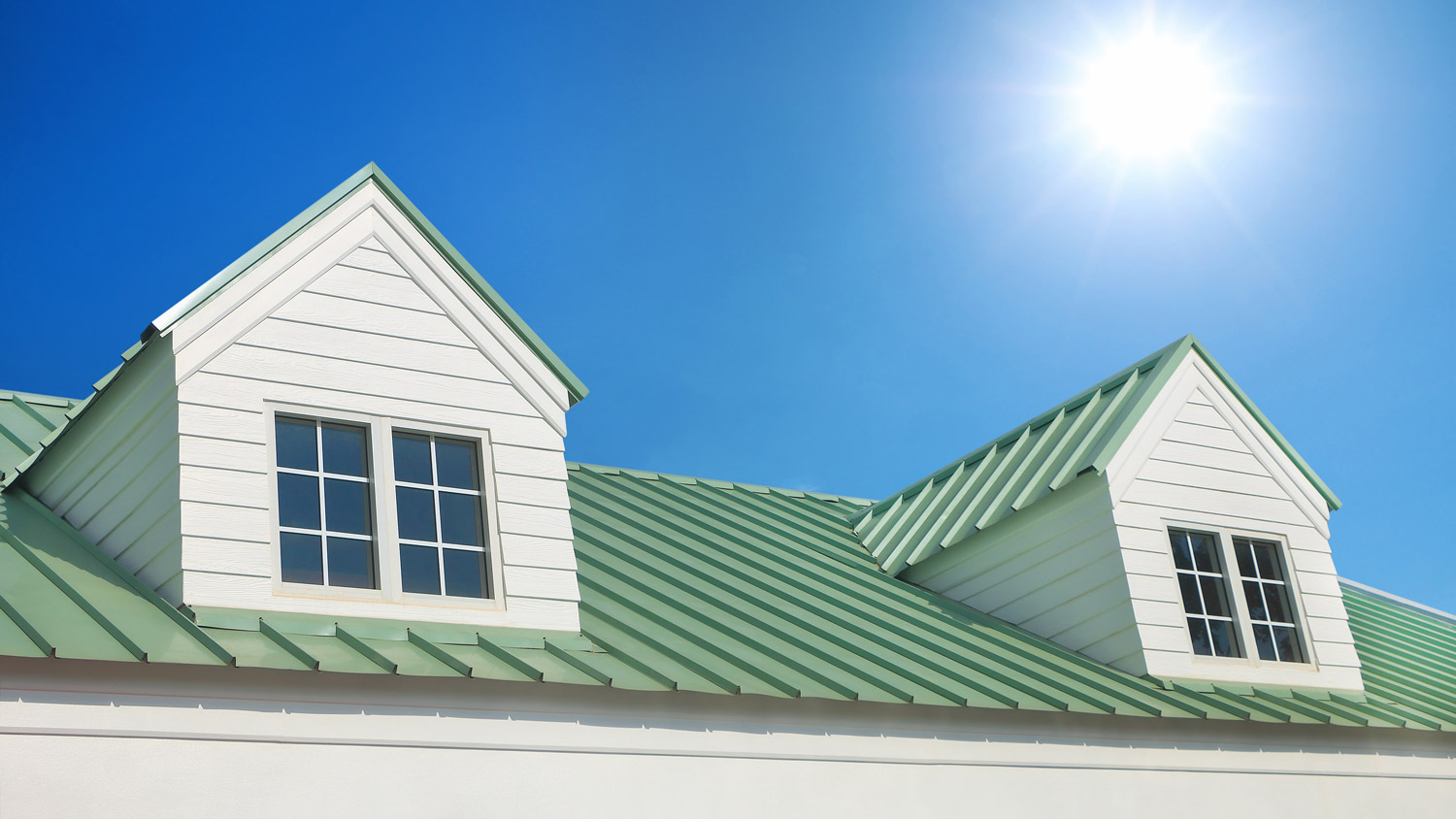
Raising the roof in your home can add character and intrigue, as well as living space. Use this guide to learn the cost to raise a roof, as there are expenses you may not have considered.
Raise the roof, not your indoor temperature


Metal roofs are some of the best roofing options for hot climates because they reflect heat and help avoid solar heat gain.
A light-colored metal roof is best at keeping indoor temperatures cool, as it will reflect more light than a darker color.
Adding insulation under your metal roof can maximize home energy efficiency and help maintain comfortable indoor temperatures year-round.
Metal roofs are a popular option in cold climates because they shed snow easily and are suitable for steeper roof pitches than asphalt shingles. But what about hot climates? Do metal roofs make your house hotter? In this guide, we’ll discuss everything you need to know about how a metal roof affects your indoor temperature.
The short answer is no—a metal roof will not make your house hotter than asphalt shingles, clay tiles, or slate. In fact, metal is the most reflective roofing option, so it will actually keep your home cooler than most other roofing materials, especially in hot, sunny climates.

There are four key ways metal roofs keep your home cool in hot, sunny areas, and understanding these factors can help you install the right metal roof for your home.
First and foremost, metal is naturally reflective and will reflect a good portion of the sunlight that hits it away from your home. This helps reduce solar heat gain, which means the heat from the sun will stay outside rather than transfer through your roof.
Metal also has a high thermal conductivity, which means it gains and loses heat rapidly. When the sun warms your metal roof, it will quickly heat up, but it will also lose heat readily to the air surrounding it. Since the heat is lost to the surrounding air, less of that heat transfers through your roofing system and into your home.
Metal roofs come in a variety of colors, and lighter colors like red and white are considered “cool roof” options. Light colors naturally reflect more sunlight, so roofing materials like asphalt shingles and slate shingles that are almost always black or dark gray aren’t ideal for keeping your home cool. The fact that metal roofs are available in white means you can maximize reflectivity and reduce your cooling bills in hotter climates.
Finally, it’s relatively simple to insulate under a metal roof. Most local metal roof installers will be able to couple your metal roof with rigid foam board insulation or even a reflective insulation to help keep the heat outside. Adding insulation will drive up metal roof installation costs, but it can be a worthwhile addition for boosting energy efficiency and saving on cooling costs over time.
Metal roofing is great for snow prone homes because metal conducts heat really well, meaning it can warm up faster and melt the snow on top of it more quickly.
Any metal roof will help keep your home cooler than asphalt shingles, but if you’re hiring a roofer to install a new metal roof, there are a few things you can prioritize to maximize your home’s energy efficiency.
Choose a light-colored roof: According to the Department of Energy, white and light-colored roofs reflect the most sunlight and keep your home the coolest. Choose a white metal roof for the best reflectivity.
Choose the right type of metal: The most common types of metal roofs are aluminum, stainless steel, zinc, and copper. Of these options, aluminum reflects the most thermal radiation, followed by zinc, steel, and copper. For the coolest home possible, choose an aluminum metal roof.
Add insulation: Paying a bit more for insulation under your metal roof can make a major difference when it comes to how your roofing material affects how hot your home gets. Choose a reflective insulation for the best results in sunny areas.
From average costs to expert advice, get all the answers you need to get your job done.

Raising the roof in your home can add character and intrigue, as well as living space. Use this guide to learn the cost to raise a roof, as there are expenses you may not have considered.

Discover how much it costs to install a drip edge, exploring how factors like your roof’s size, height, and layout affect your final costs.

Did you know there are different types of roof inspections? This guide will help you weigh roof inspection costs to figure out what’s worth it.

If you’re wondering what a roof truss is, learn about them in this guide, including durability, cost-effectiveness, and what makes them different from roof rafters.

Architectural shingles come in a variety of colors and styles and are a durable way for homeowners to recreate some of their favorite roofing looks.

Furring strips support your metal roof and improve ventilation, but only if spaced correctly. Here’s the ideal spacing of furring strips for metal roofs.